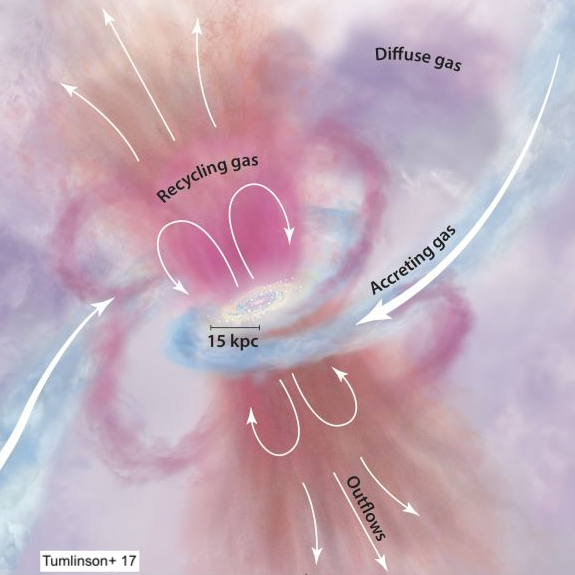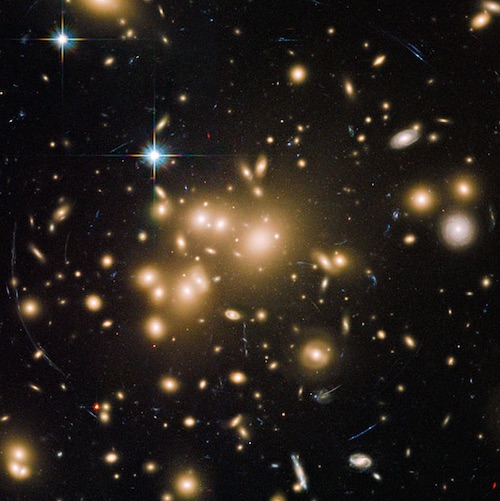Throughout my undergraduate and graduate career, I contributed to several astronomy research projects. While I now focus on my astronomy education work, I enjoyed my work towards understanding how the Universe works (specifically, how galaxies form). For a list of publications, see my ADS page or my Google Scholar page.
Dark Matter &
Galaxy Formation
My dissertation research focuses on constraining the correlation between dark matter accretion and star formation in galaxies. We've inferred from our observations of galaxies (and galaxy clusters) that galaxies like our own Milky Way exist within a large spherical halo of dark matter. This halo extends out at least 3 times as far from the center of the Milky Way as the disk of luminous matter, and it could contain up to 10 times as much mass in dark matter as the total stellar mass of the Milky Way. I work with Prof. Peter Behroozi to understand the role the accretion & growth of the halo plays in galaxy formation as compared to other factors, such as recycling processes where gas ejected from a galaxy can cool and re-accrete onto the galaxy. Specifically, I combine predictions from the UniverseMachine, an empirical model that generates galaxies from cosmological simulations, with observations of millions of galaxies from the Sloan Digital Sky Survey to develop the first constraints on dark matter accretion. The two-paper series was published in the Monthly Notices of the Royal Astronomical Society (MNRAS): Paper I and Paper II.

Galaxy Clusters
I also resarched galaxy clusters using radio interferometric data with Prof. Dan Marrone at the University of Arizona. I analyzed Sunyaev-Zel'dovich data of galaxy clusters for the Local Cluster Substructure Survey (LoCuSS) which was used in estimating scaling relations between different observable properties, including the cluster gas and stellar contents (Mulroy et al. 2019). I am also working with data from the Massive Distant Clusters of WISE Survey (MaDCoWS; see e.g., Gonzalez et al. 2019) to determine scaling relations between cluster mass (which is difficult to measure) and cluster richness (which is much easier to measure) by running models on local supercomputers.
On the right, an example of a galaxy cluster (Abell 1689) taken by the Hubble Space Telescope.

Previous Projects
My previous astronomy research projects include
| Verifying target selection methods for the APO Galactic Evolution Experiment (APOGEE) |
| Analyzing infrared colors of M dwarfs from SUPERBLINK to look for likely exoplanet hosts with Dr. Sebastien Lepine during a Research Experiences for Undergraduates program at the American Museum of Natural History in New York City, NY (on the left, I'm presenting my research at the University University of Virginia Undergraduate Research Network Symposium) |
| Identifying young stellar objects with Prof. Remy Indebetouw |
| Modeling the effects of exoplanet atmospheres on transit light curves with Prof. Phil Arras |

